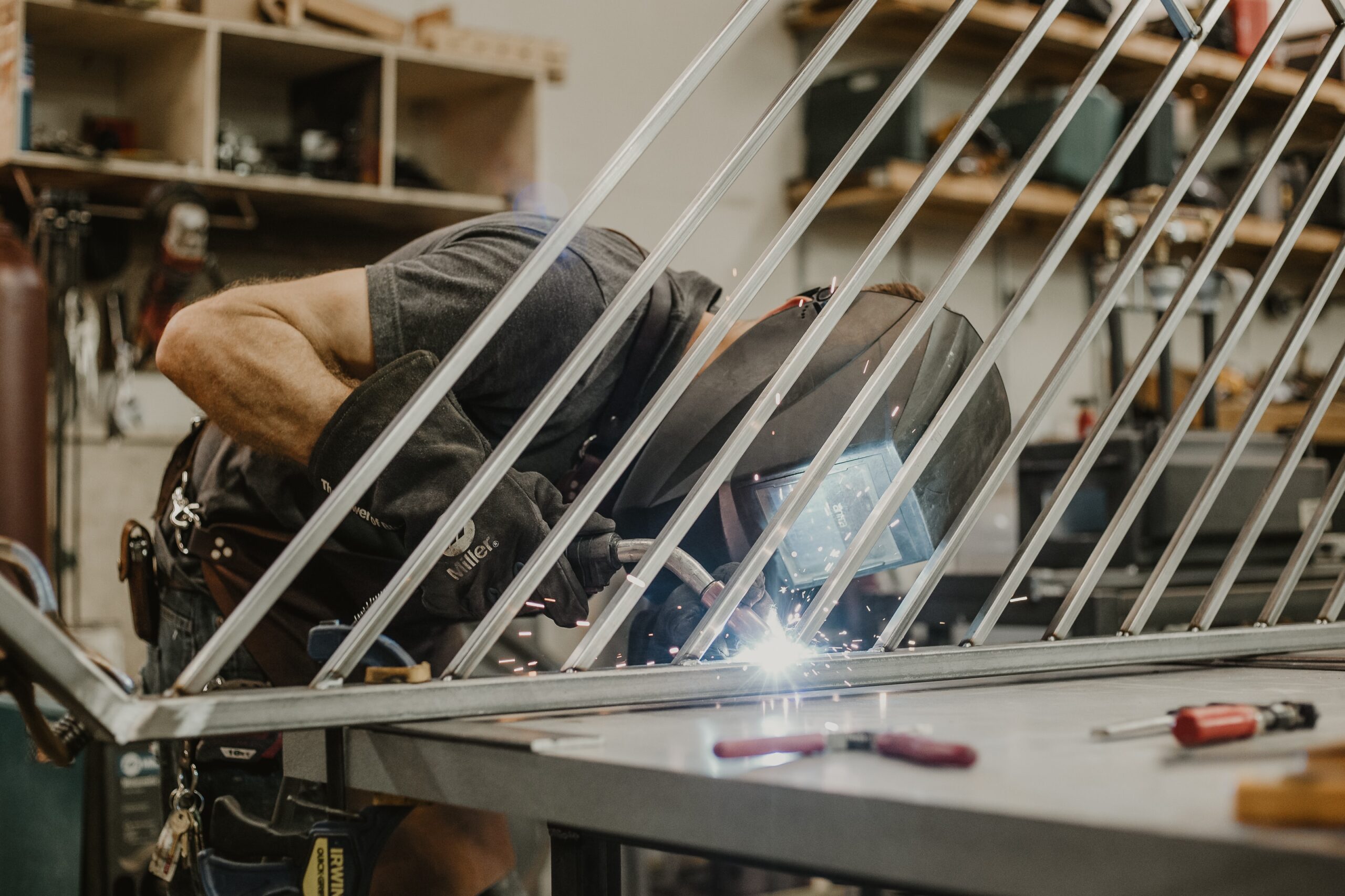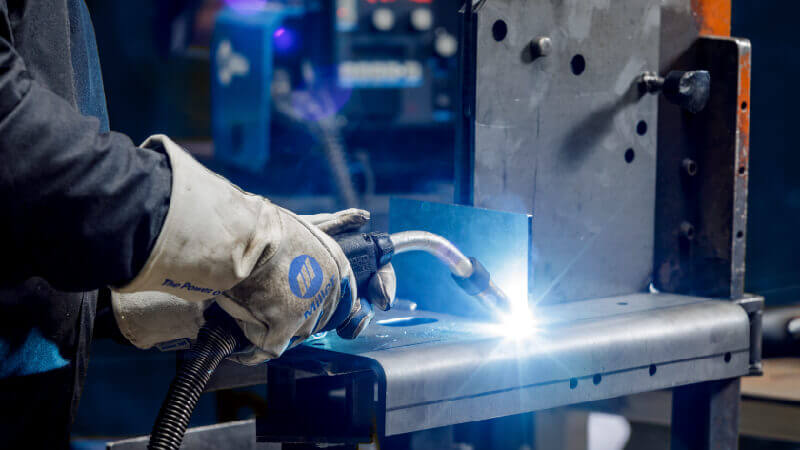Everything about Welding: Secret Insights Into Techniques and Finest Practices for Success
Welding encompasses a variety of techniques, each suited for details materials and applications. Understanding these techniques, such as GMAW, SMAW, and TIG, is important for accomplishing suitable results. The ideal devices and safety and security techniques can not be neglected. As preparation and fixing play crucial roles in the welding process, understanding these elements can significantly boost the top quality of the last item. What are the crucial aspects that assure an effective weld?
Understanding Various Welding Techniques
Welding techniques incorporate a range of approaches, each fit to certain applications and materials. Amongst one of the most typical strategies are Gas Steel Arc Welding (GMAW), Shielded Steel Arc Welding (SMAW), and Tungsten Inert Gas Welding (TIG) GMAW, likewise referred to as MIG welding, is prominent for its rate and flexibility, making it perfect for slim products. SMAW, or stick welding, is favored for its simpleness and effectiveness in exterior settings, particularly with thicker steels. TIG welding supplies accuracy and control, making it ideal for complex work and non-ferrous steels (Belgrade). Each strategy has its unique benefits and factors to consider, permitting welders to pick the most effective technique based on the task's requirements, product type, and wanted results. Recognizing these techniques is necessary for effective welding
Vital Welding Tools and Devices
While various welding methods call for certain abilities, the right tools and tools are similarly crucial for accomplishing high quality outcomes. Vital welding equipment consists of welding devices, which vary depending upon the method-- such as MIG, TIG, or stick welding. Safety equipment, consisting of gloves, aprons, and safety helmets, guarantees security and convenience throughout the procedure. In enhancement, clamps and fixtures assist secure materials in position, making certain accuracy in welds. Consumables like welding poles, cable, and shielding gas are also essential parts that affect the high quality of the weld. Furthermore, tools such as grinders and cutters assist in surface area prep work and post-weld ending up, adding to a specialist end result. Investing in top notch devices eventually improves the performance and efficiency of welding projects.
Safety Practices in Welding
Proper security techniques are crucial in the welding sector to safeguard employees from possible risks. Welders must put on proper personal protective tools (PPE), consisting of safety helmets with correct shading, handwear covers, and flame-resistant clothes. Appropriate ventilation is vital to minimize direct exposure to harmful fumes and gases produced during the welding procedure. Additionally, employees must be learnt the correct handling of welding equipment to avoid crashes. Fire precaution, such as keeping flammable products far from the welding location and having fire extinguishers conveniently available, are required. Regular assessments of tools and workspaces can aid identify possible hazards prior to they result in mishaps. By sticking to these safety techniques, welders can create a much safer working atmosphere and reduce dangers connected with their trade.
Readying Materials for Welding
Preparing materials for welding is a crucial step that greatly influences the top quality and integrity of the end product (Montana Mobile Welding and Repair Belgrade Fabrication). Correct preparation involves cleaning the surfaces to eliminate impurities such as dirt, oil, and rust, which can jeopardize the weld. Techniques such as grinding, sanding, or making use of solvents are commonly employed to achieve a clean surface. Furthermore, guaranteeing that the products fit together comfortably is essential; gaps can bring about weak welds. It's additionally crucial to take right into account the positioning and positioning of the components, as this will impact the ease of welding and the last outcome. Ultimately, picking the appropriate filler material and guaranteeing compatibility with the base metals is essential for accomplishing strong, resilient welds
Tips for Getting High-Quality Welds
Attaining top quality welds needs focus to detail and adherence to ideal practices throughout the welding procedure. Proper joint prep work is vital, ensuring surfaces are tidy and free from impurities. Choosing the ideal filler product and welding method based on the base steels is vital for excellent bonding. Maintaining constant traveling speed and angle while welding can advertise and prevent problems harmony. Additionally, managing heat input is necessary; too much heat can result in warping and weakened joints. If essential, routinely checking the welds throughout the procedure permits for prompt adjustments. Using appropriate post-weld therapies, such as cleansing and tension relief, can enhance the durability and integrity of the weld, ultimately making sure a successful outcome.
Fixing Common Welding Issues
Welding frequently provides difficulties that can affect the top quality and honesty of the final item. Common concerns such as porosity, irregular weld grains, and overheating can emerge, each requiring details repairing strategies. Understanding these issues is crucial for welders to boost their abilities and accomplish ideal outcomes.
Porosity Problems Discussed
Porosity can commonly be overlooked, it stays a vital issue in welding that can compromise the stability of a finished item. Porosity describes the visibility of tiny gas pockets within the weld grain, which can damage the joint and lead to early failing. This issue typically develops from pollutants, wetness, or improper shielding gas insurance view it coverage throughout the welding procedure. To alleviate porosity, welders must confirm that the base materials are clean and completely dry, make use of suitable protecting gases, and maintain constant welding parameters. Regularly inspecting the equipment and environment can additionally help recognize possible problems prior to they materialize in the weld. Attending to porosity properly is necessary for attaining solid, resilient welds that fulfill top quality criteria.

Inconsistent Weld Beans
Inconsistent weld beads can substantially impact the quality and stamina of a finished item. Different elements add to this issue, consisting of inappropriate traveling rate, wrong amperage setups, and irregular electrode angles. When the welder relocates as well promptly, a grain might appear narrow and do not have infiltration, while moving also slowly can create excessive accumulation. In addition, using the incorrect amperage can lead to either damaging or extreme spatter, both of which concession weld honesty. The welder's technique, such as irregular torch activity, can also lead to uneven bead appearance. To alleviate these problems, welders must concentrate on maintaining steady, regulated movements and making certain proper equipment settings to achieve harmony in their welds. Consistency is essential to achieving solid and trusted welds.
Getting Too Hot and Bending Issues
Extreme heat throughout the welding process can result in considerable overheating and deforming issues, influencing the architectural stability of the work surface. These problems typically manifest as distortion, which can jeopardize positioning and fit-up, making additional setting up testing. Elements adding to overheating consist of the choice check of welding specifications, such as voltage find this and take a trip rate, along with the kind of product being bonded. To mitigate these problems, welders should maintain consistent traveling rate and ideal warmth input while keeping track of the workpiece temperature level. Additionally, preheating or post-weld warm treatment can help ease stresses caused by quick air conditioning - Montana Mobile Welding and Repair Welding. Normal examination and adherence to ideal methods are important in stopping overheating and making certain the longevity and reliability of bonded structures
Regularly Asked Questions
What Are the Job Opportunities in the Welding Industry?
The welding market provides varied occupation opportunities, consisting of placements as welders, examiners, designers, and teachers. Professionals can work in production, building, aerospace, and auto markets, gaining from strong demand and affordable wages in different roles.
How Can I Improve My Welding Speed Without Sacrificing High Quality?
To boost welding speed without compromising top quality, one must practice effective strategies, keep devices, maximize setups, and boost hand-eye control. Regular training and looking for responses can likewise considerably add to attaining quicker, high-grade welds.
What Qualifications Are Available for Welders?
Various qualifications exist for welders, consisting of those from the American Welding Society (AWS), the National Facility for Building And Construction Education and Study (NCCER), and various industry-specific organizations. These qualifications boost employability and show skill effectiveness.
How Does Welding Influence the Features of Metals?
Welding influences the homes of steels by modifying their microstructure, which can result in modifications in firmness, stamina, and ductility. Heat input and air conditioning rates during the procedure greatly influence these product qualities.
Can I Bonded Dissimilar Metals Together?
